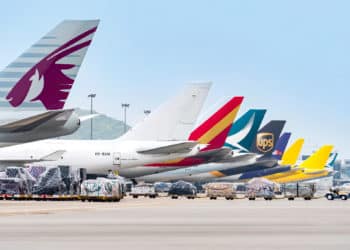No products in the cart.
Okinawa’s growing cargo prowess
Although we could write about new dedicated cargo airport proposals on almost a weekly basis, the harsh reality is that the vast majority fail to break through – Okinawa’s Naha Airport is one of a few exceptions. Following the establishment of the Okinawa International Logistics Hub in 2009, airfreight tonnage grew from a modest 935 tonnes the year prior in 2008, to over 174,000 tonnes just seven years later in 2015. But what has made Okinawa’s Logistics hub succeed, where other airports have failed to fill their shiny new warehouses?

In Japan’s remote south, Naha has quickly become more than just a transit center with cool chain facilities. With manufacturing activity located throughout Japan, exports have traditionally been consolidated and moved out of large gateways such as Tokyo or Osaka. Naha has been able to offer what these regions could not, both space for expansion, and an ideal transfer location for both imports and exports. It also allows ANA’s 767 freighters to reach far more of Asia’s population than they could from Tokyo, allowing the carrier to set up a major overnight express hub there.
Further, local government officials, ANA Cargo, and forwarder Yamato Transport have boosted outbound volumes by convincing export-oriented Japanese companies to store spare parts destined for Western and Asian markets in facilities adjacent to the airport. With such agglomeration, ground and air transport have been able to rapidly move cargo from all points across the 2,500km long expanse of islands which make up Japan, to Naha, and from there reach most Asian cities within a four hour flight. Today more than 130,000 components are stocked in the Logistics Center from dozens of companies. Additional 3PL services such as on-site repair and assembly are also in the works.
Naha does more than just redirect cargo traffic from Tokyo and other major hubs. Some neighboring prefectures began subsidizing a portion of the transportation cost to move local manufactures from their point of origin to the Naha Hub – a practice which has encouraged some small and medium-sized companies to begin exporting. Japan Airlines’ regional subsidiary, Ryukyu Air Commuter, has also recently expanded service between Naha and regional destinations — offering cargo and passenger service on its fleet of Bombardier Q400 combis.
Were the Transpacific Partnership free-trade agreement between Japan and eleven other Asian and American countries to be ratified, even more traffic could find its way through Naha. True, the agreement could make some of Japan’s seafood exports less-competitive, but the pact would expedite customs clearance for airfreight imports, and encourage broader trade. However, despite being signed in February of this year, ratification of the agreement faces an uphill battle in many of its member countries.




